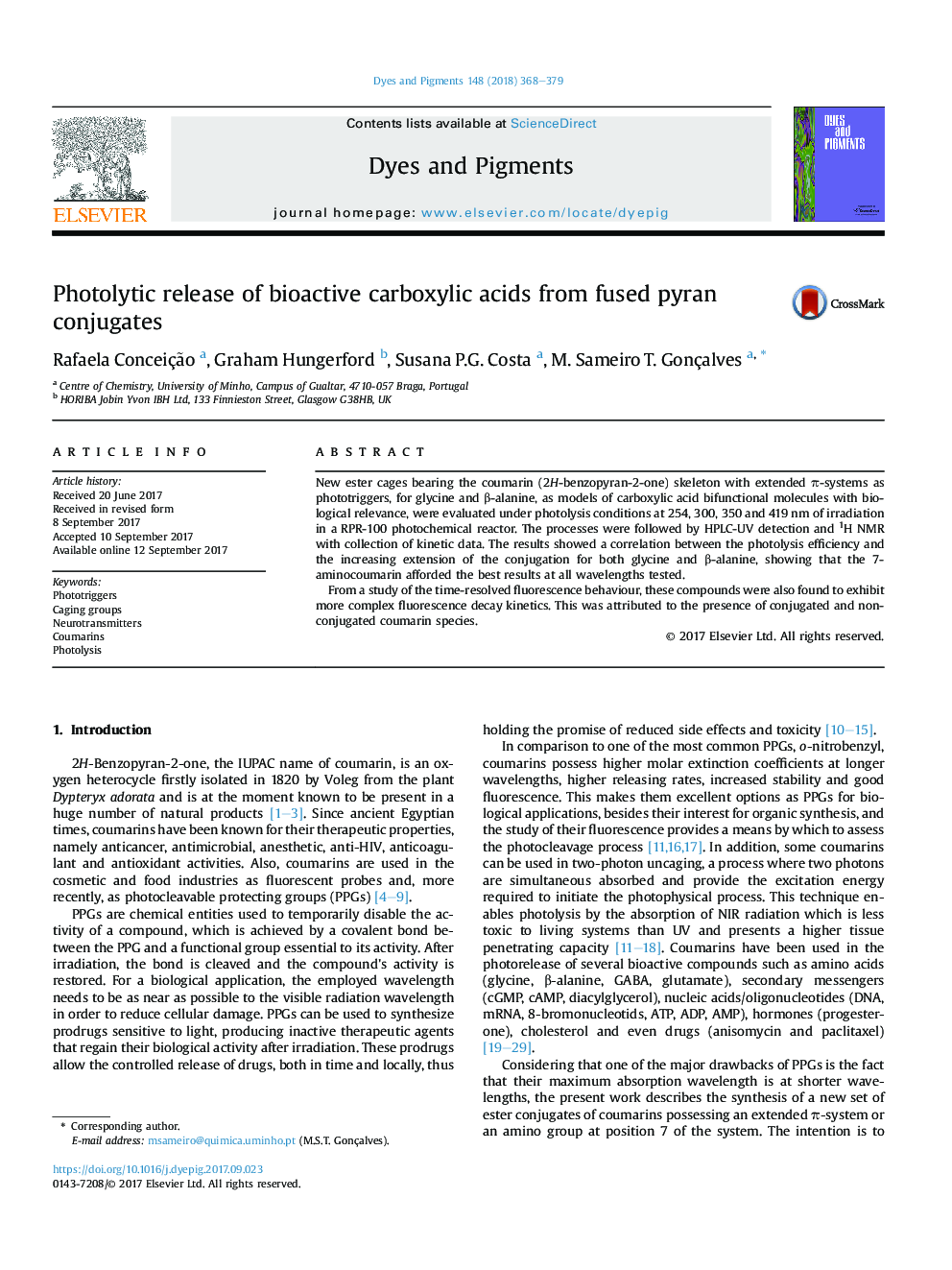| Article ID | Journal | Published Year | Pages | File Type |
|---|---|---|---|---|
| 4765730 | Dyes and Pigments | 2018 | 12 Pages |
â¢Coumarins with amino and aryl substituents were synthesized and used in the derivatization of glycine and β-alanine.â¢The new ester cages, as models of carboxylic acid bioactive molecules, revealed to be interesting photo-responsive units.â¢A remarkable behaviour towards irradiation at higher wavelengths occurred in conjugates bearing the styryl-coumarin.â¢Time-resolved fluorescence studies revealed different fluorescing species by the determination of decay associated spectra.â¢This study shows new promising alternative moieties for the development of photoactivable fluorescent acid prodrugs.
New ester cages bearing the coumarin (2H-benzopyran-2-one) skeleton with extended Ï-systems as phototriggers, for glycine and β-alanine, as models of carboxylic acid bifunctional molecules with biological relevance, were evaluated under photolysis conditions at 254, 300, 350 and 419 nm of irradiation in a RPR-100 photochemical reactor. The processes were followed by HPLC-UV detection and 1H NMR with collection of kinetic data. The results showed a correlation between the photolysis efficiency and the increasing extension of the conjugation for both glycine and β-alanine, showing that the 7-aminocoumarin afforded the best results at all wavelengths tested.From a study of the time-resolved fluorescence behaviour, these compounds were also found to exhibit more complex fluorescence decay kinetics. This was attributed to the presence of conjugated and non-conjugated coumarin species.
Graphical abstractDownload high-res image (187KB)Download full-size image
